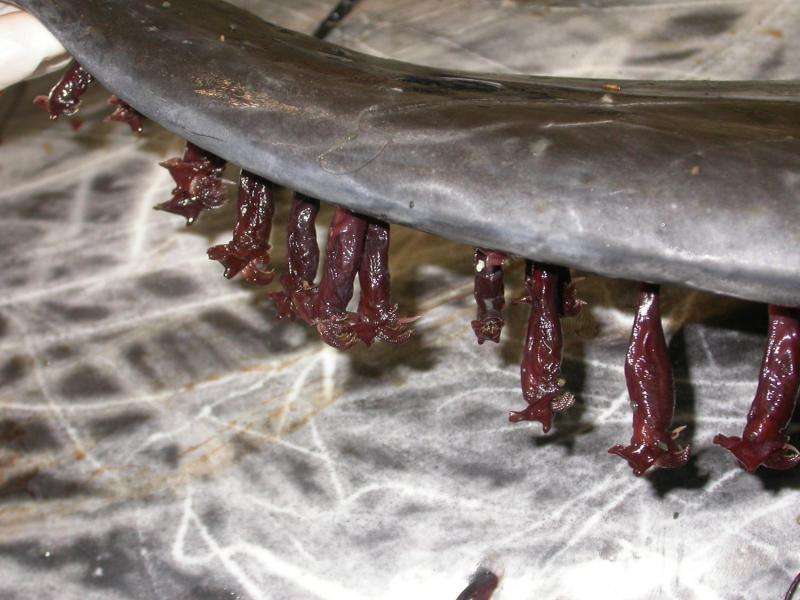Barnacles go with the flow to find a home on dolphin fins

Highly specialized coronulid barnacles may be able to identify and attach to the fins of quick-swimming dolphins, locating areas suited for finding food and developing larvae, according to a study carried out as a collaboration between the University of Valencia, Spain, and the University of Southern Mississippi, and published June 17, 2015 in the open-access journal PLOS ONE by Juan Carrillo and colleagues.
Scientists have reported several types of symbiotic barnacles that settle on living host organisms. The highly specialized coronulid barnacle, Xenobalanus globicipitis, attaches exclusively to cetaceans, particularly dolphins from tropical and temperate waters, but little is known about the factors that drive the attachment location on its hosts. In this paper, the authors investigate patterns of microhabitat selection of the coronulid barnacle on the striped dolphin, based on data on occurrence, abundance, distribution, orientation, and size of the barnacles collected from 242 striped dolphins stranded along the Mediterranean coast of Spain from 1979-2009.
The authors found that barnacles exclusively attach to the fins, particularly along the trailing edge facing away from the water flow. Occurrence, abundance, and density of the barnacles were significantly higher, and barnacles were significantly larger, on the tail fin (caudal fin) than on the flippers and dorsal fin. On the tail fin, barnacles tended to select the dorsal side and the central portion of the fin. The authors suggest that barnacles may be able to chemically recognize the dolphin skin and passively find a location through the 'vortex' that is created by water flowing over and around the dolphin on the fins. Barnacles selected the edge of fins and attached facing away from water flow, possibly benefiting from a suitable environment to filter nutrients for food and to protect developing larvae. The authors point out that this is the first study that quantifies microhabitat selection patterns of X. globicipitis and does so at several spatial scales. However, a limitation of this study is that the data were collected from stranded, deceased dolphins, so understanding how these results apply to the general dolphin population needs to be studied further.
More information: Carrillo JM, Overstreet RM, Raga JA, Aznar FJ (2015) Living on the Edge: Settlement Patterns by the Symbiotic Barnacle Xenobalanus globicipitis on Small Cetaceans. PLoS ONE 10(6): e0127367. DOI: 10.1371/journal.pone.0127367
Journal information: PLoS ONE
Provided by Public Library of Science




















